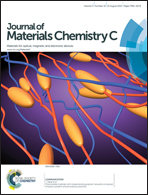High quality LED lamps using color-tunable Ce3+-activated yellow-green oxyfluoride solid-solution and Eu3+-doped red borate phosphors
Abstract
Yellow-emitting phosphors activated by Ce3+ are key components of white light-emitting diodes (LEDs) based on the blue (Ga,In)N LED. The need to replace incandescent and/or halogen lamps with warm white LEDs has driven LED phosphor development toward compositions beyond the Ce3+-doped garnets used in cool white LED packages. In this contribution, for pointing out how chemical substitutions play a crucial role in tuning the optical properties, we investigate the structural and optical properties of oxyfluoride solid-solutions and borate phosphors, specifically the (La,Ca)3(Al,Si)O4(O,F):Ce3+ yellow-green phosphors and the Ca3La3(BO3)5:Eu3+ red phosphors, via a combination of density functional theory, synchrotron X-ray detection, pair-distribution-function analyses and spectroscopy measurements. By incorporating these phosphors with a new phosphor-capping method on InGaN light-emitting diodes, we obtain the warm white light that meets the spectral and efficiency requirements for high-efficacy solid state warm white lighting lamps. We believe that solid-solutions between distinct and structurally related phosphor systems can be a good strategy to broaden possibilities for using in warm white LED phosphors.


 Please wait while we load your content...
Please wait while we load your content...